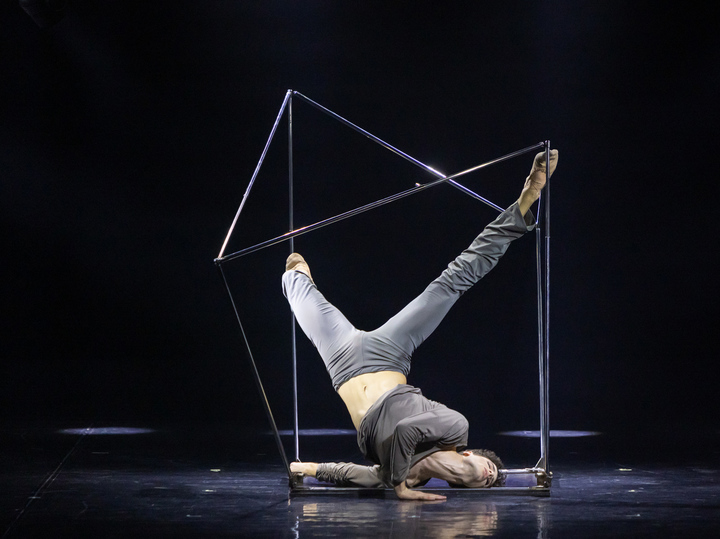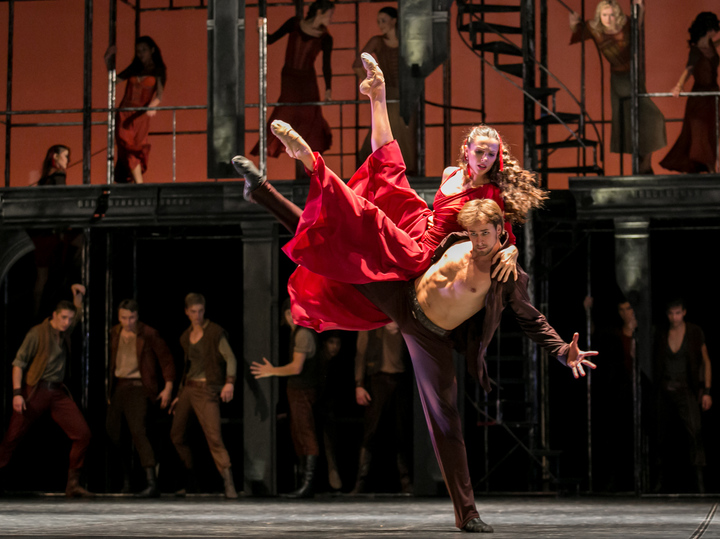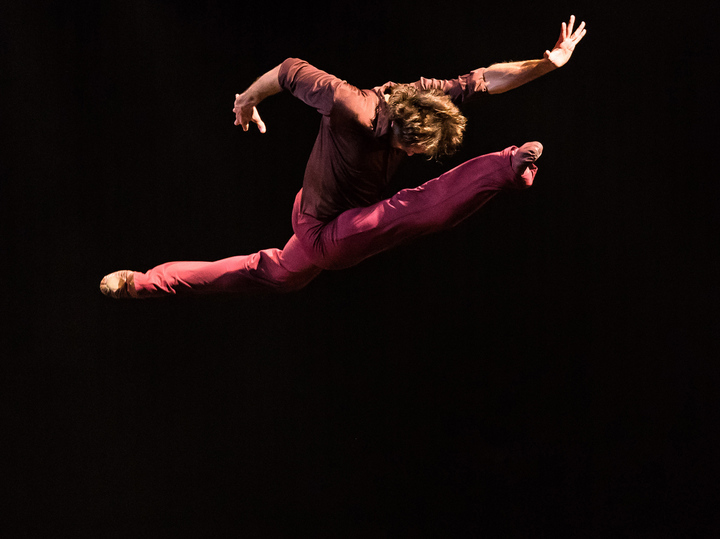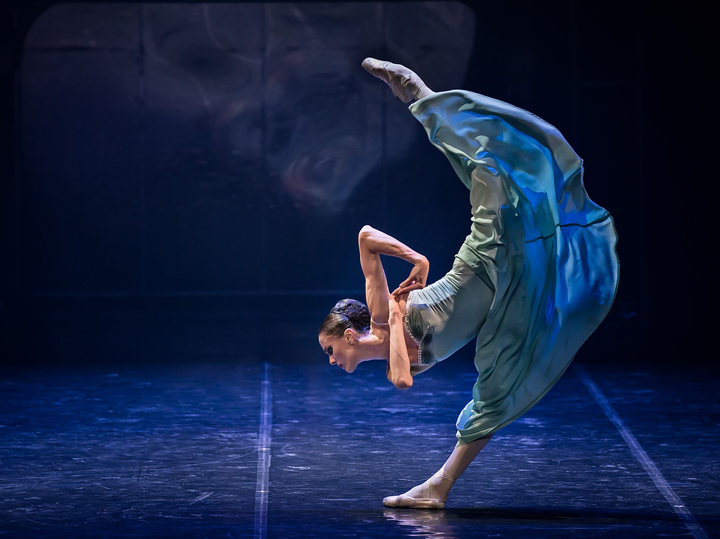The tour of the Boris Eifman troupe triumphantly ended at the Bolshoi Theater
[ad_1]
All four ballets are based on the works of Chekhov, Pushkin, Dostoevsky and Tolstoy. The choreographer is trying to solve the “damned questions” of Russian literature, which became even more relevant in the 20th and 21st centuries, but passed into modern Russia from the 19th century. The very questions that haunted the brilliant minds of Russian philosophy and literature: Vladimir Solovyov, Nikolai Berdyaev, Pavel Florensky, Dmitry Merezhkovsky, Nikolai Rozanov.
The actions of the first two ballets take place today. Eifman brings “The Seagull” and “Eugene Onegin” into a burning modernity, slightly changing the plot, but retaining the main thing, those hidden thoughts that torment us today. For example, what is the notorious Russian soul, the “slave consciousness” of a person. These questions are sharply posed in the ballet “On the Other Side of Sin” based on “The Brothers Karamazov” by Dostoevsky.
In this work by Eifman, not only music, but also the prophetic words of the writer are heard from the stage against the background of Wagner’s music. Under them, like wound up mechanisms, the “new” unified people (the same “new people” that Chernyshevsky dreamed of in the novel What Is to Be Done, only a century later) perform a terrible macabre dance.
“Man is a mystery. It must be unraveled, and if you will unravel it all your life, then do not say that you have wasted time; I am engaged in this secret, because I want to be a man, ”these words of Dostoevsky are the best suited to describe the creative path of Boris Eifman.
In Chekhov’s “The Seagull”, shown as the first of four ballets, there is a more scrupulous return to Chekhov’s original source, which, according to the choreographer, did not let him go for years. This is a landmark work on a topic biographically close to Eifman, about how different artists realize themselves in art in different ways. The central source of creative reflection for all authors.
Before us is a new, significantly revised edition of Eifman’s famous ballet The Seagull, which he first performed back in 2007. It is not for nothing that the explanation “Ballet History” is added to the former name. Eifman moves the action from a rural estate to a ballet class. The new “The Seagull” is a performance about the theater, its essence, behind the scenes, the artists and their relationship with the choreographer.

After the ballet was shown in Moscow a year ago, some changes took place in it. The bright scene from the previous version of Eifman has returned, where tipsy adventurers amuse themselves by shooting from a scarecrow at Zarechnaya, who has left the theater and has descended to a brothel with either paint or whipped cream.
Appeared at the ballet and new performers. There are two of them in the key part of Konstantin Treplev. In the second cast, this part was beautifully performed by Evgeny Grachev, a young artist who came to the theater quite recently after graduating from the Moscow Provincial College of Arts in Khimki. And at the premiere on the first day, 22-year-old Vladimir Afonichkin shone in this part.
The part went to a talented young man after the departure of the brilliant Eifman dancer Daniel Rubin, who danced at the premiere last year, to the Boston Ballet. Vladimir danced on the stage of the Bolshoi Theater with his older (for 15 minutes) twin brother Daniil Afonichkin, who played the role of Rothbart, the evil wizard from Swan Lake. It is this ballet that the famous choreographer Boris Treplev puts on the stage at Eifman’s – a rare version where the parts of Odette and Odile are separated (this happened only twice in the history of the ballet: in Gorsky’s version staged on the stage of the Bolshoi Theater together with Nemirovich-Danchenko, and through 10 years at Vaganova).
Both graduated from the Krasnogorsk Choreographic School in 2020 and were immediately invited to the Eifman Theater.
Vladimir danced for the first time on the Historical Stage of the Bolshoi Theater and with a mop of black curly hair, he somewhat resembled Trigorin of his predecessor Daniel Rubin, approaching him in terms of performance, but managing to bring his own individuality to the dance.
Treplev is the second big part that Vladimir Afonichkin performed at the Eifman Theatre. He, like his brother, dances Lensky, but the role of Tsarevich Pavel in the ballet Russian Hamlet, which Eifman once staged at the Bolshoi Theater, became the most difficult in his repertoire. And the first was the role of Alyosha Karamazov. Vladimir performed both the part of Lensky and the part of Alyosha Karamazov on these tours.

The central moment of Alyosha’s dance in “On the Other Side of Sin” is called “clapping” by the artists. Vladimir Afonichkin performs this memorable dance with such expression and dedication that it seems as if his body is radiating invisible but tangible rays. “They explained to me that at this moment demons break out of Alyosha, which I hide in myself for the whole performance. It’s like I explode myself, and these rays scatter in all directions,” says Vladimir Afonichkin.
Created back in 1995, the ballet was once crowned with all conceivable and unthinkable awards, up to the Golden Mask, and received international recognition. The hysterically painful atmosphere of the novel and all Dostoevsky’s work constantly attracts Eifman. Psychological breakdown, hysterical anguish, the existence of heroes on the verge – a distinctive feature of the choreographer’s work. No one else seems to be able to express how this almost transcendent, metaphysical state of balancing “on the edge” (as in Vysotsky’s song) is expressed in performances by the amazing artist Oleg Gabyshev.
I have been watching this dancer for many years, I have seen many of his excellent performances, but it turned out that the 37-year-old Gabyshev had not yet said his main word. What he showed on the Historical Stage of the Bolshoi Theater in the role of Onegin cannot be called otherwise than a brilliant game and a brilliant dance. A theatrical person may be lucky enough to see this on stage only once in his life.
The plot of Pushkin’s textbook work by Eifman is almost unchanged. Only the third dream of Eugene in the second act does not have a corresponding confirmation in Pushkin’s text. Onegin is stabbed to death out of jealousy by his former friend, and now the master of life, blinded by the explosion Gremin (impressively plastic and expressive actor Sergei Volobuev). This becomes a retribution and a mirror image of the scene of the murder of Lensky (Vladimir Afonichkin).

The choreographer intended to stage a ballet about Freud, but abandoned this idea. However, dreams are given a special place in this and in his other performances. The entire second act in the ballet “Eugene Onegin” is an almost continuous dream. It is built as a mirror image of the first, and ends with letters to the void, which Onegin writes to Tatyana (Maria Abashova), trying to find at least some support for the elusive reality in love for her.
Many scenes from Eifman’s ballets are already textbooks. Using the example of the scene of Anna Karenina’s suicide under the wheels of a train in the ballet of the same name, the masters teach the art of directing at theatrical universities. The corps de ballet in this scene is unmistakably tuned, and dances like an ultra-precise clock. The corps de ballet of the Eifman Theater is a single and powerful force that can be likened to a choir in an ancient Greek tragedy. There are many personalities in it, such as Vasily Vanzhula, who is already performing poster roles (on tour he played the role of the Prince in the ballet The Seagull. Ballet Story). But the choreographer is still a single body, one of the main characters of his performances. After all, it is this organized mass of people that makes the protagonist throw herself under the train, becomes this train at the end of the performance.
The criteria for selecting artists at the Eifman Theater are very strict. The height of the girls should be from 174 cm, the boys – 184. They are matched one to one, handsome to handsome, as is done in the race scene in Anna Karenina. Vronsky must be the most striking and sexy. This is what Artem Lepkov became in this game. Although he did not succeed in surpassing such a unique performer of Vronsky (as well as the role of the Commissar in the ballet “Red Giselle”) as Igor Subbotin, he was nevertheless very convincing and bright in this role. The two-meter-tall handsome man amazed the audience not only with the plasticity of his body, but also with the psychological depth of the image, accurately reproducing the movements generated by the psychophysical reactions of his hero to a particular situation in a sniper’s way.
I saw Lepkov’s debut in this part on tour in Kazan and I can note the great creative growth of the artist. Actually, already in his debut, he managed to create a deep and capacious image in this part, but those were only “rough sketches” of the role, compared to the Vronsky, whom he showed at the Bolshoi Theater.
No less important than the role of Vronsky in Eifman’s play is the role of Karenin, Anna’s husband, who is very convincingly played in the play by Sergei Volobuev and Dmitry Krylov. Those supports and plastic accents that Volobuev did were strikingly exactly in line with the fragments of music that Boris Eifman had chosen for the scenes associated with Vronsky.

The writer Dmitry Merezhkovsky called Leo Tolstoy a seer of the flesh in his research. This definition also applies to Eifman’s work, which was especially clearly expressed in the ballet based on the novel Anna Karenina that ended the tour. This is a performance about the languor of the heroine’s flesh, her gap between the flesh and the spirit, the passion and duty of the mother. It was the erotic obsession of the heroine, which will cover Anna with her head, forcing her to sacrifice for the sake of her beloved man “the duty of a mother to her son,” Maria Abashova did not even play, but lived on stage. Artists who embody Eifman’s ideas so accurately, like Maria Abashova in the ballet Anna Karenina and Oleg Gabyshev in Eugene Onegin, Eifman’s theater has not yet known.
[ad_2]
Source link






